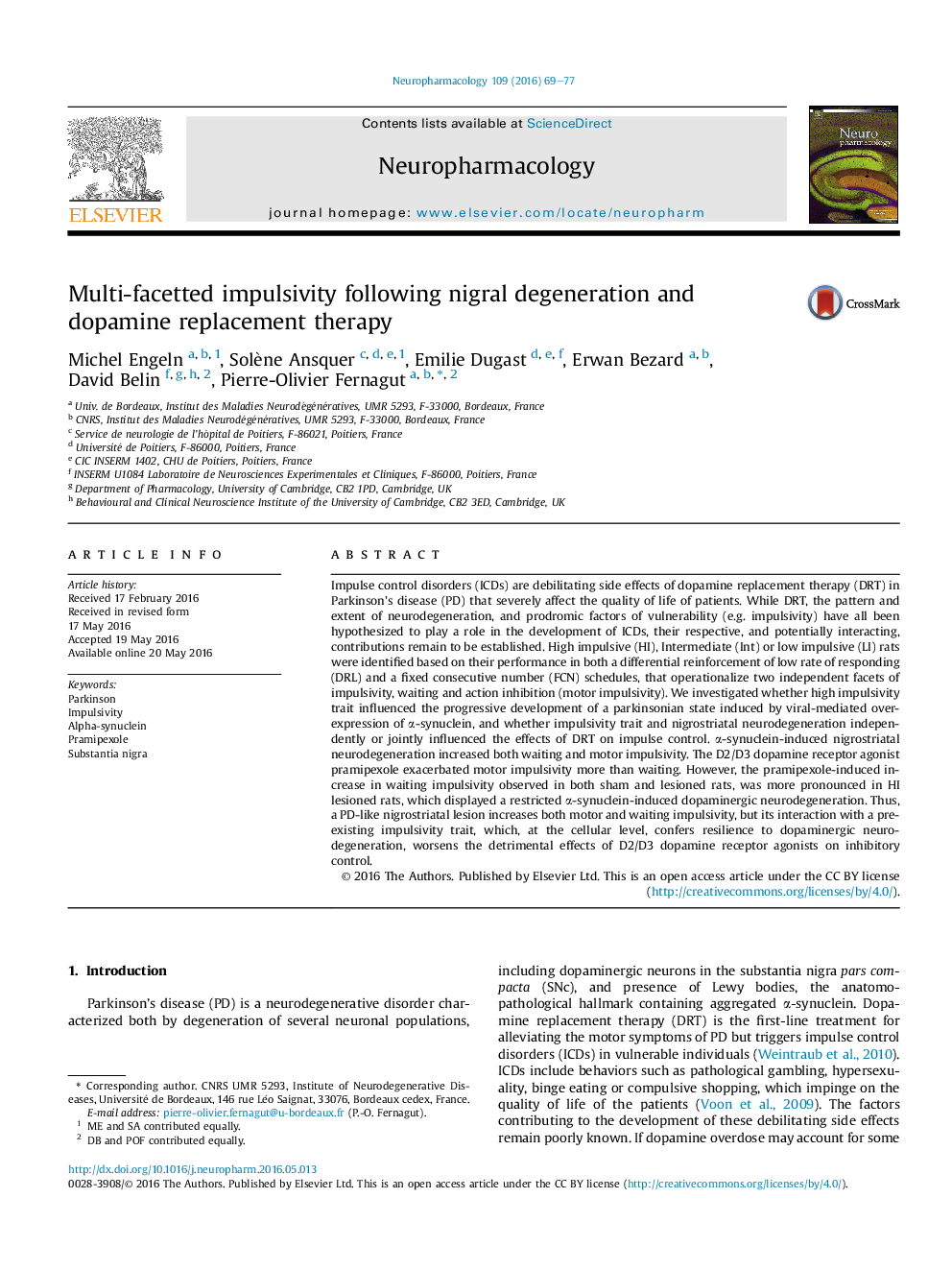| کد مقاله | کد نشریه | سال انتشار | مقاله انگلیسی | نسخه تمام متن |
|---|---|---|---|---|
| 5813169 | 1556606 | 2016 | 9 صفحه PDF | دانلود رایگان |
- Degeneration of the substantia nigra increases both waiting and action impulsivity.
- Reduced alpha-synuclein-induced degeneration in high impulsive rats.
- Pramipexole increases waiting and action impulsivity in sham and lesioned rats.
- Exacerbated effect of pramipexole in high impulsive vs. low impulsive lesioned rats.
Impulse control disorders (ICDs) are debilitating side effects of dopamine replacement therapy (DRT) in Parkinson's disease (PD) that severely affect the quality of life of patients. While DRT, the pattern and extent of neurodegeneration, and prodromic factors of vulnerability (e.g. impulsivity) have all been hypothesized to play a role in the development of ICDs, their respective, and potentially interacting, contributions remain to be established. High impulsive (HI), Intermediate (Int) or low impulsive (LI) rats were identified based on their performance in both a differential reinforcement of low rate of responding (DRL) and a fixed consecutive number (FCN) schedules, that operationalize two independent facets of impulsivity, waiting and action inhibition (motor impulsivity). We investigated whether high impulsivity trait influenced the progressive development of a parkinsonian state induced by viral-mediated overexpression of α-synuclein, and whether impulsivity trait and nigrostriatal neurodegeneration independently or jointly influenced the effects of DRT on impulse control. α-synuclein-induced nigrostriatal neurodegeneration increased both waiting and motor impulsivity. The D2/D3 dopamine receptor agonist pramipexole exacerbated motor impulsivity more than waiting. However, the pramipexole-induced increase in waiting impulsivity observed in both sham and lesioned rats, was more pronounced in HI lesioned rats, which displayed a restricted α-synuclein-induced dopaminergic neurodegeneration. Thus, a PD-like nigrostriatal lesion increases both motor and waiting impulsivity, but its interaction with a pre-existing impulsivity trait, which, at the cellular level, confers resilience to dopaminergic neurodegeneration, worsens the detrimental effects of D2/D3 dopamine receptor agonists on inhibitory control.
Journal: Neuropharmacology - Volume 109, October 2016, Pages 69-77
